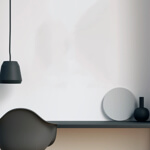Isaac de Moucheron (Amsterdam 1670 - 1744)
An animated View of a Palace Courtyard
pen and brown ink, watercolor, over traces of black chalk
225 x 328 mm
signed and dated 'Moucheron fecit 1742', bottom center
Isaac de Moucheron was born in 1667 into a family of artists; his father, Frederick (1633 - 1686) was a painter, who trained both him and his younger brother Balthasar...
Isaac de Moucheron was born in 1667 into a family of artists; his father, Frederick (1633 - 1686) was a painter, who trained both him and his younger brother Balthasar (born 1674) and greatly influenced them, especially in their early work. After his father died in 1686, Isaac took over the workshop; In 1694 he set off for Italy, travelling via Paris, Orléans and Lyon before briefly staying in Bologna, where he produced several drawings. Having arrived in Rome, de Moucheron stayed there for about a year and a half. He joined the notorious society of the Bentvueghels, under the nickname 'Ordonnantie' and was greatly inspired by the Roman skyline as well as by the antique and renaissance architectural motifs and art, which he clearly studied closely. De Moucheron also undertook the obligatory trip to Tivoli where he drew the temples of Vesta and Sybil; he was back home in Amsterdam by August 1697. As his sketchbooks - which he must have taken with him on his trip - appear not to have survived, most of our knowledge of his Italian travels has come down to us through later work.
In 1713 he married Anna van der Bucken; the marriage remained childless. De Moucheron was an outstanding and prolific draughtsman, who painted wall hangings and large-scale decorative pieces as well as an important number of drawings and watercolours, some as designs for larger works but many intended as works of art in their own right, so-called 'picture drawings', which were hugely popular during the artist's life. The present late work may certainly be counted among the latter, belonging to a group of park landscapes that make up a large part of de Moucheron's oeuvre: fantasy gardens or 'capriccios' combining existing and made up elements, often referencing renaissance and antique architectural or sculptural motifs he had seen on his Italian journey.
Provenance
Johann Goll van Frankenstein, Amsterdam;
Private collection, France.


